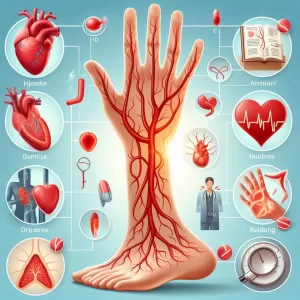What is Myasthenia Gravis?
Myasthenia gravis is an autoimmune condition that causes muscles to become weak and quickly tired. In this condition, the immune system mistakenly produces proteins that fight infections (antibodies) that attack the body’s healthy tissues. These interfere with the ability of nerves to pass information to muscles. Often the muscles of the eyes and eyelids are affected, causing the common symptoms of eyelid drooping and blurred vision. Muscle weakness typically becomes more noticeable over the course of the day or with exertion and improves on rest. Medication is available that improves the communication between nerves and muscles and thus increases the muscle’s strength, but there is no sure cure for this condition.
Risks
Myasthenia gravis is a rare condition. It occurs when the immune system mistakenly produces proteins that fight infections (antibodies) against parts of the muscles responsible for transmitting impulses from the nerves to make muscles work. This causes the muscles to work slowly and become weak. The reason why this occurs is uncertain, though it is thought that an overactive thymus gland may be partially responsible. Women are slightly more likely than men to develop this condition, and it tends to become more common with age.
Symptoms
The main symptom of myasthenia gravis is a muscle weakness that gets worse over the course of the day. The most commonly affected muscles are the eye, face, and throat. People with myasthenia gravis may notice that their eyelids droop, that they develop blurred or double vision, or difficulties with chewing, talking, or swallowing. Sometimes the muscles of the limbs or the neck can be affected. This may cause problems with walking, posture, and balance. People with myasthenia gravis may experience a period during which their symptoms become much worse than normal. These episodes can cause weakness of the breathing muscles and lead to severe breathing difficulty with an inability to cough.
Diagnosis
The diagnosis may be suspected based on the symptoms and neurological examination, but a blood test for the antibodies is the only way to confirm the diagnosis. Other tests of nerve and muscle function may help to confirm the diagnosis.
Treatment
Muscle weakness can be improved by taking medication that improves the communication between nerves and muscles. Medications to dampen the immune system, such as steroids and immunosuppressant medications, are also commonly used. In cases of a severe deterioration of muscle strength, medications may need to be given through the veins to suppress the immune system. In some cases, removal of the thymus gland can improve the symptoms, but this does not cause immediate improvement.
**Question**: What is Myasthenia Gravis?
**Answer**:
Myasthenia gravis is a chronic autoimmune neuromuscular disease that affects the communication between nerves and muscles. It results from antibodies attacking the neuromuscular junction, the point of connection between nerves and muscles. This leads to muscle weakness or fatigue, which worsens with activity and improves with rest.
**Symptoms of Myasthenia Gravis:**
* Gradual muscle weakness in the eye muscles, causing drooping eyelids (ptosis) and double vision (diplopia)
* Difficulty with chewing, swallowing, and speaking
* Respiratory weakness, leading to shortness of breath and difficulty breathing
* Weakness in the limbs, neck, and trunk
**Causes of Myasthenia Gravis:**
The exact cause of myasthenia gravis is unknown, but it is believed to involve an autoimmune reaction. The body produces antibodies that attack the acetylcholine receptors on the neuromuscular junction. Acetylcholine is a neurotransmitter that allows nerves to communicate with muscles. When the receptors are blocked, muscle weakness occurs.
**Risk Factors for Myasthenia Gravis:**
* Age: Onset typically occurs between ages 20 and 40
* Gender: Women are more commonly affected than men
* Family history of myasthenia gravis
* Certain medical conditions, such as lupus or Graves’ disease
**Diagnosis of Myasthenia Gravis:**
Diagnosis involves a physical examination, blood tests (to detect antibodies against acetylcholine receptors), and an electromyogram (EMG) to confirm muscle weakness and abnormalities in nerve-muscle communication.
**Treatment for Myasthenia Gravis:**
Treatment aims to improve muscle strength and reduce weakness. Options include:
* Medications to suppress the immune system (immunosuppressants)
* Cholinesterase inhibitors to enhance acetylcholine activity at the neuromuscular junction
* Plasmapheresis to remove antibodies from the bloodstream
* Thymectomy (removal of the thymus gland) in some cases
**Living with Myasthenia Gravis:**
Managing myasthenia gravis involves:
* Adhering to a treatment plan
* Avoiding activities that worsen weakness
* Using assistive devices (e.g., canes, wheelchairs) when necessary
* Monitoring symptoms and seeking medical attention if weakness worsens or new symptoms develop
One comment
Leave a Reply
Popular Articles








This is the best article I’ve read about myasthenia gravis. Informative and concise!